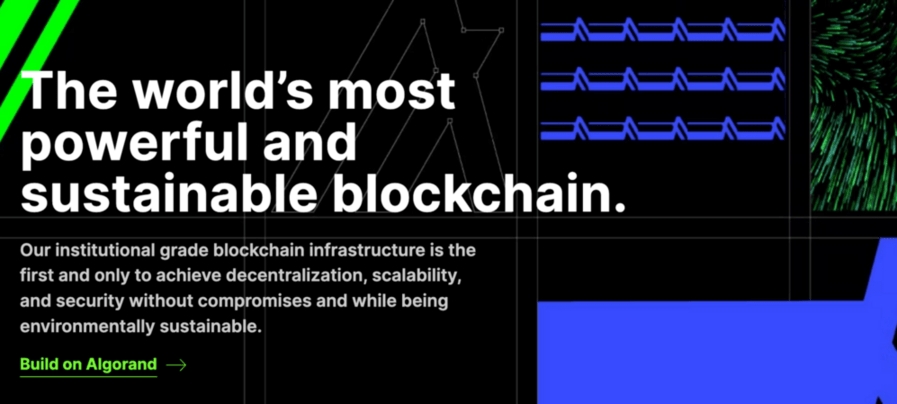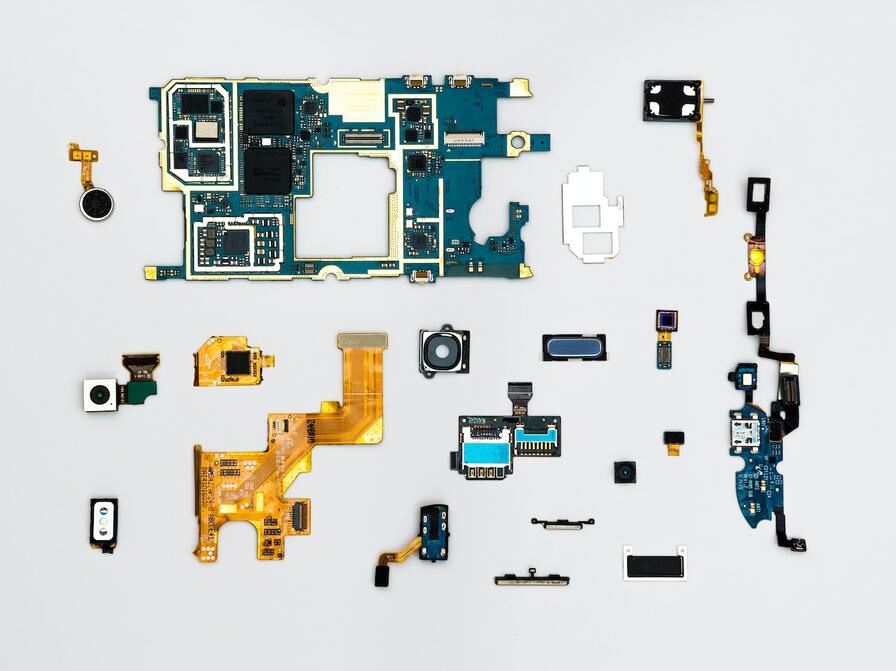
Disclaimer: The Industry Talk section features insights by crypto industry players and is not a part of the editorial content of Cryptonews.com.
Sustainability has become an increasingly important focus of many crypto projects in an attempt to repair some of the reputational damage done by Bitcoin’s massive energy use. These cryptos employ eco-friendly technologies to lower their energy requirements, enabling them to reduce (or remove) their carbon footprint.
This guide takes an in-depth look at the most sustainable cryptocurrency projects on the market, diving into how they help positively affect the environment, before exploring some of the reasons why sustainable cryptos are so important.
The Most Sustainable Cryptocurrency Projects in 2022 – Top 10 List
Many of the most energy-efficient cryptocurrency projects ensure sustainability is high on their list of priorities, helping them appeal to a broader audience of potential investors. Listed below are ten of these projects, each of which will be reviewed thoroughly in the following section:
- Chia (XCH) – The Most Sustainable Cryptocurrency in 2022
- Ethereum (ETH) – Best Sustainable Cryptocurrency for dApp Developers
- Tezos (XTZ) – The Most Sustainable Crypto in the Blockchain Niche
- Polygon (MATIC) – Sustainable Scaling Solution for the Ethereum Blockchain
- Avalanche (AVAX) – Highly-Scalable Blockchain with Low Energy Requirements
- Algorand (ALGO) – Environmentally-Friendly Blockchain With Impressive Sustainability Practices
- Ripple (XRP) – Leading Sustainable Energy Crypto in the Payments Sector
- TRON (TRON) – Low-Energy Network Using Delegated Proof-of-Stake (DPoS) Consensus Protocol
- Stellar (XLM) – Sustainable Payments Network With CO2 Removal Pledge
- Cardano (ADA) – Popular Blockchain with Strong Sustainability Mission
A Detailed Look at the Most Sustainable Cryptos to Invest In
Those looking for the crypto with the most upside will likely gravitate towards sustainable cryptos, as these projects are designed with longevity in mind. To that end, most of these projects use cutting-edge technology to ensure minimal electricity requirements whilst offering valuable use cases.
With that in mind, let’s dive in and explore the most sustainable crypto projects in more detail.
1. Chia (XCH) – The Most Sustainable Cryptocurrency in 2022
Our pick for the most sustainable crypto this year is Chia. As well as being one of the best cryptos to buy right now, Chia is a blockchain network focusing on making a positive environmental impact, evidenced by its branding and marketing. The primary way that Chia makes this impact is through its drastically reduced energy requirements, resulting from its unique ‘Proof-of-Space-and-Time’ consensus protocol.
This makes Chia different from the best proof-of-stake coins – and arguably even more energy-efficient. With Chia’s protocol, blocks are validated through network participants ‘plotting’ space on unused hard drives. Not only does this reduce electronic waste, but it also means the Chia network can operate with minimal electricity.

To put this into perspective, Chia uses just 0.19 TWh of electricity per year – around 0.16% of Bitcoin’s annual energy consumption. Chia’s team has even constructed a well-researched ‘Green Paper’, explaining in detail how this process works. As such, Chia is undoubtedly a sustainable crypto cryptocurrency with a bright future ahead.
Buy Crypto with eToro
Cryptoassets are highly volatile and unregulated. No consumer protection. Tax on profits may apply.
2. Ethereum (ETH) – Best Sustainable Cryptocurrency for dApp Developers
Ethereum needs no introduction, as the network has surged into the limelight over the past few years due to its smart contract functionality. This functionality has made the Ethereum network the go-to for most decentralized application (dApp) developers, enabling the metaverse, NFT, and decentralized finance (DeFi) niches to prosper.
At the time of writing, the ‘Ethereum merge’ has just occurred, which saw the network transition to a Proof-of-Stake (PoS) consensus protocol. This is a sustainable crypto mining alternative, as it validates transactions through staking, which requires no advanced hardware. As such, Ethereum is now far more energy-efficient than before.

As noted on Ethereum’s blog, the network will now consume around 99.95% less energy than when it used a Proof-of-Work (PoW) consensus mechanism. In turn, Ethereum now describes itself as a low-carbon platform, making it more appealing to eco-conscious developers. The move to a PoS consensus even makes the network harder to attack, highlighting the comprehensive benefits of ‘the Merge’.
Buy ETH with eToro
Cryptoassets are highly volatile and unregulated. No consumer protection. Tax on profits may apply.
3. Tezos (XTZ) – The Most Sustainable Crypto in the Blockchain Niche
Those looking for a sustainable cryptocurrency alternative to Ethereum may wish to consider Tezos. Like Ethereum, Tezos is an open-source blockchain with smart contract capabilities. However, Tezos differentiates itself by using a ‘liquid PoS’ protocol, designed to be as sustainable as possible.
This protocol works similarly to a regular PoS protocol yet makes the validation process more accessible. Network participants can become ‘bakers’ or ‘delegators’ depending on how many XTZ tokens they hold. Through this approach, the Tezos network uses just 2.5g of CO2 equivalent per transaction.

According to Tezos’ website, the network has an average energy footprint of just 17 global citizens – with many reports stating that this is the most sustainable crypto in the blockchain sector. What’s more, Tezos has even partnered with PricewaterhouseCoopers (PwC) to accurately measure the network’s energy use and make the data publicly viewable.
Buy XTZ with eToro
Cryptoassets are highly volatile and unregulated. No consumer protection. Tax on profits may apply.
4. Polygon (MATIC) – Sustainable Scaling Solution for the Ethereum Blockchain
Polygon has emerged as one of the most searched crypto projects following ‘the Merge’ since it acts as a scaling solution for Ethereum. With Ethereum in the process of becoming more scalable, there was concern that the Polygon network would no longer be needed. However, Polygon has carved out a unique position in the market, helping increase its lifespan.
Ethereum’s scalability is set to rocket in 2023 when the network implements a ‘sharding’ technique. Yet even after this technique is implemented, the Ethereum network will still not be able to handle as many transactions as Polygon can. To put this into perspective, Polygon can facilitate around 7,000 transactions per second (TPS), whilst Ethereum can only handle about 20.

Polygon is also an environmentally sustainable cryptocurrency since it has a lower carbon footprint than Microsoft and Deloitte. What’s more, Polygon’s team has pledged to go carbon-negative in 2022 through the regular purchase of carbon offsets. The team has even donated $20 million to various climate change projects to boost the network’s positive impact.
Buy MATIC with eToro
Cryptoassets are highly volatile and unregulated. No consumer protection. Tax on profits may apply.
5. Avalanche (AVAX) – Highly-Scalable Blockchain with Low Energy Requirements
Avalanche has long been touted as one of the cryptos with the most potential due to its innovative multi-chain approach. Instead of using one chain, as Ethereum and Solana do, Avalanche uses three – allowing the network to dedicate specific tasks to certain chains.
This dramatically increases scalability, with the Avalanche network capable of handling 4,500 TPS. Furthermore, the network employs a variation of PoS called the ‘Avalanche Consensus’, designed to make Avalanche a sustainable energy crypto.

A report from the Crypto Carbon Ratings Institute (CCRI) shed light on Avalanche’s energy consumption, highlighting that the network only consumes around 489,311 kWh of electricity per year. This is less than ‘green’ blockchains like Cardano, Solana, and Algorand, highlighting Avalanche’s energy efficiency.
Buy AVAX with eToro
Cryptoassets are highly volatile and unregulated. No consumer protection. Tax on profits may apply.
6. Algorand (ALGO) – Environmentally-Friendly Blockchain With Impressive Sustainability Practices
Algorand is a blockchain project founded by the leading cryptographer Silvio Micali, who won the prestigious Turing Award back in 2012. Many believe Algorand is one of the best long-term crypto projects due to Micali’s stewardship, with the network capable of handling a higher number of TPS than Ethereum whilst being more accessible.
Moreover, Algorand has never suffered any downtime and supports various programming languages, meaning that dApp developers can construct their creations without having to learn another methodology. Many sustainability-focused projects are also hosted on Algorand’s network, including ClimateTrade and Watr.

Through Algorand’s ‘Pure Proof-of-Stake’ consensus protocol, the development team has stated that the network is now carbon-neutral – with the intention to become carbon-negative in the future. This is achieved by Algorand’s team regularly purchasing carbon offsets through the partnership with ClimateTrade, making it one of the most sustainable crypto projects on our list.
Buy ALGO with eToro
Cryptoassets are highly volatile and unregulated. No consumer protection. Tax on profits may apply.
7. Ripple (XRP) – Leading Sustainable Energy Crypto in the Payments Sector
Ripple differs from many other projects on our list because it focuses solely on revolutionizing the payments sector. Using blockchain technology, the Ripple network can process digital transactions much faster (and cheaper) than traditional payment systems like SWIFT.
For context, Ripple-based transactions take just five seconds to complete, with fees that equate to a fraction of a cent. These transactions are verified through a consensus protocol rather than mining, meaning the Ripple network is both fast and energy-efficient.

According to the XRP Carbon Calculator, each transaction on the Ripple network consumes just 0.0079 kWh of electricity. This is actually less than the 0.440 kWh of electricity consumed in paper currency transactions. Finally, the Ripple network has been shown only to emit 270 metric tons of CO2 each year – exponentially less than the Bitcoin network.
Buy XRP with eToro
Cryptoassets are highly volatile and unregulated. No consumer protection. Tax on profits may apply.
8. TRON (TRON) – Low-Energy Network Using Delegated Proof-of-Stake (DPoS) Consensus Protocol
TRON emerged as one of the market’s top trending cryptos in mid-2021 when the token’s price surged by over 660%. Investors found TRON attractive due to its aim of decentralizing the web – specifically focusing on the entertainment industry.
Using TRON’s network, content creators can remove the middleman and have more control over their creations. Moreover, the TRON network has smart contract functionality and is compatible with the Ethereum Virtual Machine (EVM). This means developers who initially created their dApps on Ethereum can easily port them over.

In terms of sustainability, a report by the CCRI found that the TRON network consumes as much electricity annually as just 15 US households. Moreover, TRON’s electricity consumption was reportedly less than that of leading networks like Algorand, Cardano, and Solana. This is achieved through TRON’s delegated proof-of-stake (DPoS) consensus, which ensures the network is sustainable while remaining decentralized.
Buy TRON with eToro
Cryptoassets are highly volatile and unregulated. No consumer protection. Tax on profits may apply.
9. Stellar (XLM) – Sustainable Payments Network With CO2 Removal Pledge
Stellar is an environmentally sustainable cryptocurrency operating in the payments sector. Like Ripple, Stellar aims to make cross-border payments faster and cheaper than they currently are. This is achieved through the ‘Stellar Consensus Protocol’, which uses ‘nodes’ worldwide to validate transactions.
This means network users can send money worldwide, with transactions only taking five seconds to finalize. Interestingly, Stellar’s development team has also focused on sustainability, enlisting the help of PwC to help accurately assess the network’s electricity consumption and greenhouse gas emissions.

According to the Stellar Foundation, a node running Stellar’s software only consumes around 261,435 kWh of electricity per year – about the same as 22 US households. To mitigate this impact even further, Stellar’s team has also established a carbon dioxide removal commitment, pledging to pay for the removal of the network’s carbon footprint since 2015.
Buy XLM with eToro
Cryptoassets are highly volatile and unregulated. No consumer protection. Tax on profits may apply.
10. Cardano (ADA) – Popular Blockchain with Strong Sustainability Mission
Concluding our list of sustainable cryptocurrency projects is Cardano. Cardano is often listed as one of the best altcoins on the market due to its peer-reviewed approach, combined with its leadership from Ethereum co-founder Charles Hoskinson. Like Ethereum, Cardano has become a hub for dApp developers operating in various sectors.
Cardano has one of the first blockchains to popularize the PoS consensus mechanism, with the developers naming their approach ‘Ouroboros’. Like other PoS chains, Cardano’s energy expenditure is low relative to the best proof-of-work coins.

Interestingly, Cardano’s team has several roles dedicated solely to sustainability and publishes an in-depth sustainability report each year that details the positive impact the network is having. Cardano’s team has also targeted net-zero emissions for the chain and actively pursues investments that drive them towards this goal.
Buy ADA with eToro
Cryptoassets are highly volatile and unregulated. No consumer protection. Tax on profits may apply.
What is a Sustainable Cryptocurrency?
Now that we’ve listed some of the most sustainable cryptos on the market, let’s discuss what these cryptos actually are. Most market participants define sustainable cryptocurrencies as those that actively minimize their energy requirements to reduce their carbon footprint.
Sustainable crypto cryptocurrency projects have seen a surge in demand over the past few years due to the looming threat of global warming. According to data from NASA, the planet’s temperature has risen by 1.01°C since 1880. Although it doesn’t seem like much, this slight increase in temperature has led to a rapid rise in the sea level – which could have disastrous effects.

One of the major contributors to the planet’s rising temperature is CO2 emissions, which come from many sources – including electricity generation. As such, when a cryptocurrency network (e.g. Bitcoin) uses enormous amounts of energy, it directly leads to more CO2 being pumped into the atmosphere – which negatively affects the environment.
This is where sustainable cryptos come in, as these projects use technologies that minimize their electricity requirements. The most common technology used is the Proof-of-Stake (PoS) consensus mechanism, which allows networks to validate transactions without the need for energy-intensive ‘mining’.

This sustainable crypto mining alternative has now become the ‘go-to’ for most blockchain networks, as not only does it require less energy, but it also allows network participants to generate a yield through staking. Some networks even take things one step further by putting their own spin on the PoS protocol – for example, Chia uses a ‘Proof-of-Space-and-Time’ mechanism to secure the network.
These sustainable networks look to be the future since the crypto market’s growth shows no signs of slowing down. This growth will inevitably lead to more significant energy requirements, which is why energy-efficient networks are so crucial. As a result, investors will naturally gravitate away from high-energy projects in favour of ‘greener’ alternatives.
Key Reasons Why Sustainable Crypto is Important
Most new cryptocurrency projects have sustainability as one of their fundamental values, designing their technology to be as energy-efficient as possible. Yet why are these sustainable cryptos so important? To answer this question, presented below are four reasons why these cryptos are likely to be the future:
Improves the Crypto Market’s Reputation
One of the main reasons that sustainable cryptocurrencies are so important is that they help improve the market’s reputation. Most market participants will have seen negative press about Bitcoin’s colossal energy requirements, which has harmed people’s perception of crypto as a whole.
However, as sustainable cryptos become more prevalent, these perceptions will start to change. In turn, crypto investing will become appealing to new demographics, causing more capital to flow into crypto projects and leading to further innovation.
Help Slow Down Global Warming
As noted by Climate.gov, the average combined land and ocean temperature increase per decade since 1981 has reached 0.18°C. This is more than double what it was before 1981 and highlights the need for rapid change.

Sustainable cryptos can help offer a solution, as not only do they consume lower amounts of energy, but they also make energy-intensive projects less appealing. As this trend continues, we’ll likely see these projects fall by the wayside, reducing the crypto market’s contribution to global warming.
Provides Scope for High Returns
Investing in sustainable crypto can also be lucrative, as these projects often have the most extended lifespan. This is because sustainable cryptos tend to employ the latest technology to reduce their electricity consumption, helping them stay ahead of the pack.
What’s more, a growing number of investors are becoming environmentally conscious, meaning these sustainable projects are even more appealing than before. As more investment flows into these projects, it’ll help them expand and improve – providing scope for higher investor returns.
Helps Futureproof the Market
Finally, the rise of sustainable cryptocurrencies has undoubtedly helped the crypto market’s longevity, which was at risk when Bitcoin was the only viable option. With more projects than ever utilizing sustainable practices, the market’s future looks exceedingly bright.

Furthermore, due to the market’s competitive nature, these projects will naturally continue to innovate to stay ahead of the pack. Not only will this benefit the project individually, but it’ll prompt other projects to follow suit – helping boost the positive environmental impact.
How Can Investors Find Sustainable Cryptocurrencies?
Investors looking to buy sustainable cryptocurrencies must ensure that they actually are sustainable rather than just claiming to be. To streamline this process, detailed below are some of the best approaches investors can take when identifying sustainable projects:
Use Social Media Platforms
Social media is an excellent way for investors to uncover cryptocurrency projects with sustainable values. Most leading cryptos now have Twitter and Instagram accounts, providing regular updates on the project and its ambitions.

By scrolling a project’s Twitter or Instagram feed, it’ll become apparent whether that project has an environmental focus on not. In addition, investors can also scour various subreddits, such as r/CryptoCurrency, to look for threads dedicated to eco-friendly cryptos.
Look for Technological Innovations
Although PoS blockchains are the most common alternative to PoW chains, there are other technologies that offer a sustainable way to validate transactions. Although not discussed in this article, projects like Hedera and IOTA use unique mechanisms that enable them to be both sustainable and scalable.
In addition, investors can also keep tabs on established projects to see if they are implementing any significant changes. A prime example of this is Ethereum’s shift to a PoS consensus mechanism, which means the network is now much more sustainable.
Keep Up with Current Affairs
Investors can also keep up with the latest crypto news articles to see which projects are gaining publicity for their sustainability efforts. The increased need for sustainable cryptos has meant that these projects are often thrust into the limelight, helping investors become aware of them.

Those looking for sustainable projects can also keep tabs on current affairs worldwide. By doing this, investors can identify environmental issues and then seek out projects that solve those issues, whether that be through decreased energy consumption or purchasing carbon offsets.
Read the Project’s Whitepaper
Finally, investors can uncover sustainable cryptos by reading the project’s whitepaper. The whitepaper will detail the intricacies of the project’s technology, allowing investors to see whether it can really be considered sustainable.
Additionally, investors can also analyze the project’s whitepaper to see the team’s future plans. If the roadmap notes goals such as net-zero emissions or carbon neutrality, then the project in question is highly likely to value sustainability.
The Most Sustainable Cryptocurrency to Invest In – Conclusion
To summarize, this guide has presented a comprehensive overview of the most sustainable cryptocurrency projects on the market, diving into how they reduce their electricity requirements and make a positive impact on the environment.
Investors looking to buy sustainable cryptos can do so by creating an account with eToro. eToro serves more than 28 million clients worldwide and offers 75+ cryptocurrencies to trade – all from as little as $10. What’s more, eToro charges a simple 1% fee (plus the spread) on all crypto-based positions, ensuring costs are both low and transparent.
Invest in Sustainable Cryptos with eToro
Cryptoassets are highly volatile and unregulated. No consumer protection. Tax on profits may apply.
FAQs
Which crypto is considered sustainable?
Through our research and analysis, we’ve found that Chia is the most sustainable crypto on the market right now. This is thanks to Chia’s unique ‘Proof-of-Space-and-Time’ consensus protocol, which utilizes unused disk space to validate network transactions.
Which project represents the most sustainable cryptocurrency?
Chia and Ethereum are two of the most sustainable cryptocurrencies available right now. Both of these networks have low electricity requirements whilst remaining secure and decentralized – with Chia even having a dedicated ‘Green Paper’ detailing how it positively impacts the environment.
This news is republished from another source. You can check the original article here



